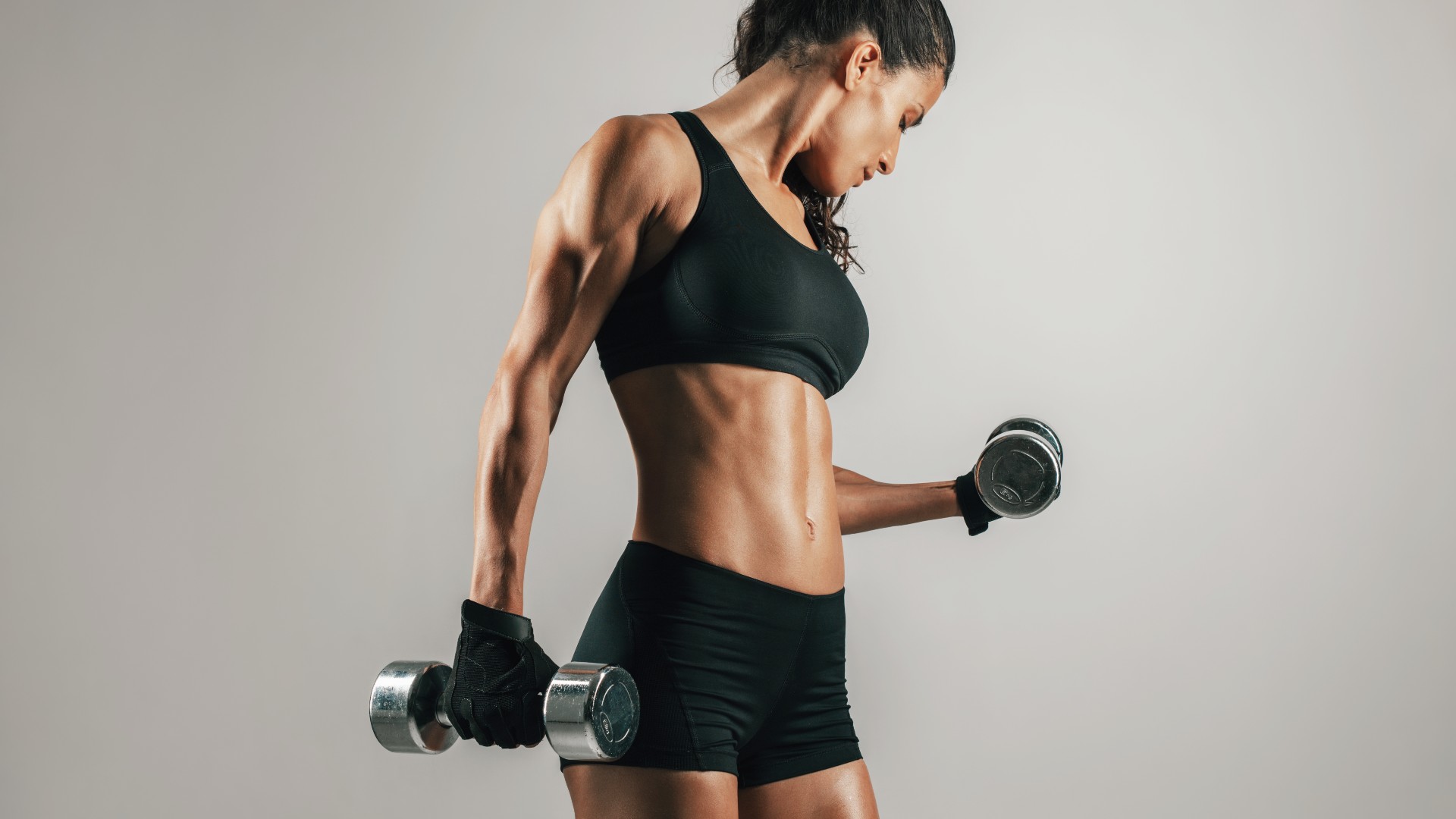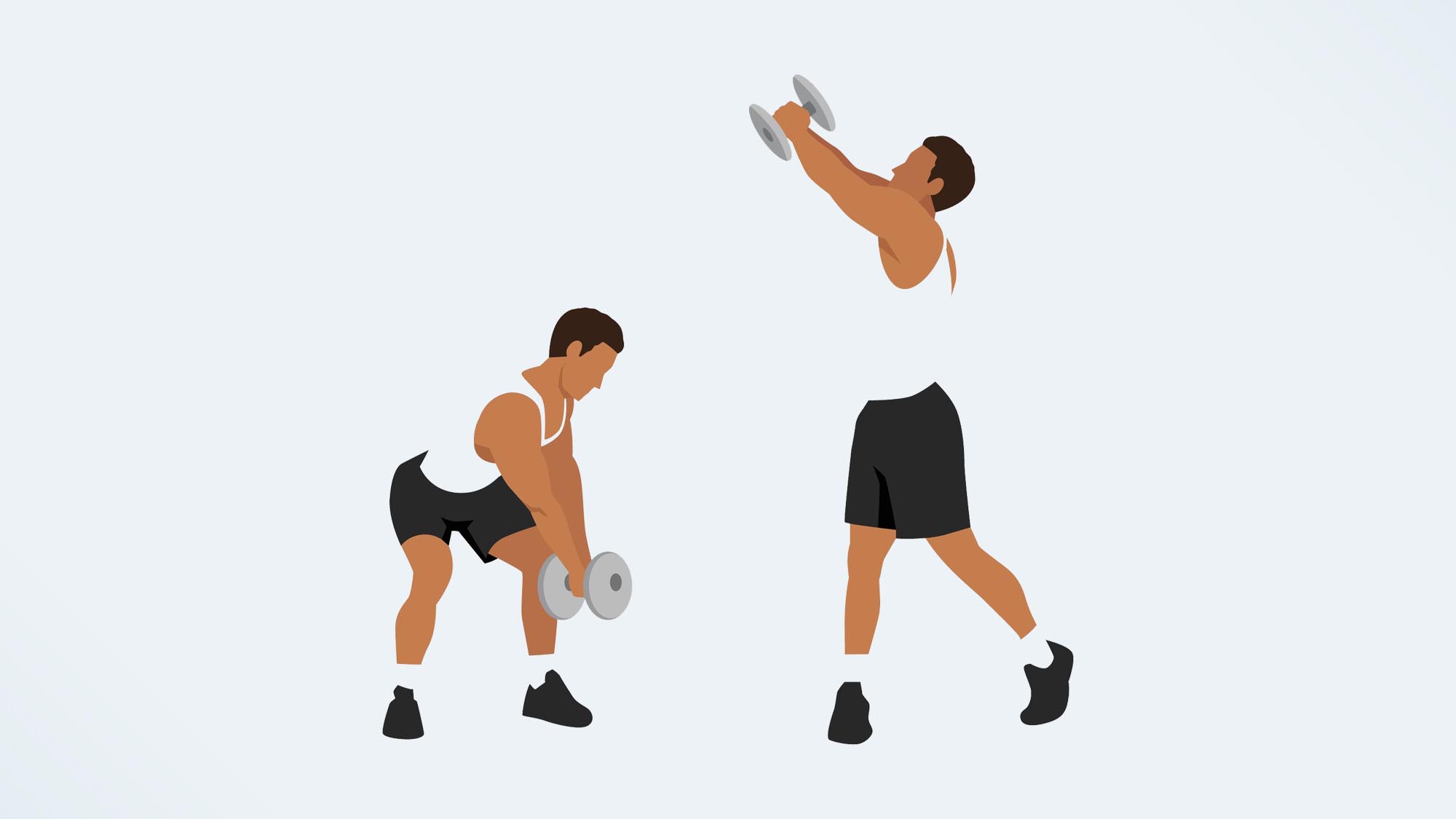
Whatever your reason for standing workouts, a standing ab workout worth its salt will torch your obliques and various core muscles without Russian twists, bicycle crunches or getting down on the ground.
So, if sitting or lying down is off the table for you, try this three-move standing ab workout to build your abs and obliques and develop a stronger midsection without hurting your lower back.
We recommend doing your 15-minute ab workout on one of the best yoga mats to support your feet, but it can be done anywhere and with minimal equipment. Bonus.

Before we begin, we know it’s easy to get sucked into misleading social media pages that suggest chiseled six-packs and sculpted stomachs result from a few standalone ab exercises. Incorrect.
Unless you’re lucky enough to be genetically gifted, most people find visible abs take hard graft. And they aren’t developed from hundreds of crunches, sit-ups or standing abs exercises — although ab workouts help build muscle.
Several factors determine a toned torso. Lifestyle choices like regular resistance training and diet play a role, as do your stress levels, sleep and genetics. And you can’t choose where to reduce fat; here are 5 reasons you can’t see your abs yet, despite working out, so you can learn more.
In the meantime, here are three standing ab exercises to set your core muscles alight. Warning: This standing ab workout comes with a side of oblique burn.
Get instant access to breaking news, the hottest reviews, great deals and helpful tips.
3-move, 15-minute standing ab workout
Targeting and strengthening the muscles responsible for supporting and moving your torso could help you perform better, however you train. Say hello to your obliques.
These muscles consist of internal and external muscles and run down the sides of your waist from the ribs to the pelvis. And their job? Rotation and side flexion, mainly. Developing strength and muscle across your waist could improve your chances of muscle definition using these three standing ab exercises. So, here they are.
1. Standing lateral swings

Lateral swings are unilateral and help you train one side of your body at a time. And research has shown this could elicit cross-education — stimulating muscles indirectly during a movement, meaning you could target weaker muscles and build equal strength across the body.
How:
- Stand with feet slightly wider than shoulder-width apart and the weight between your legs
- Softly bend your knees and lock them in place. Engage your core and set your shoulders back and down with a flat back
- Grip the weight with your right hand, straight arm and slightly swing it to the left, then drive the kettlebell across your body to the right
- As the kettlebell travels upward, stand tall and squeeze your glutes
- At shoulder height, control the weight down to just below and outside the left knee, creating a diagonal line from the kettlebell to the shoulder joint
- Straighten your legs as the weight travels up, hinge at the hips and re-bend the knees on the way down.
The movement pattern of the bell rotates the midsection, and this gentle twisting motion torches the abs and oblique muscles. We recommend learning how to do a kettlebell swing and how to hold a kettlebell properly here. And remember to switch sides halfway or alternate every rep.
2. Single-arm farmer's walk
Also known as the suitcase carry, loading one side of your body is a brilliant core strengthening exercise that relies on anti-rotation. That means your oblique muscles activate to keep you stable, balanced and upright as you walk with weights. Remember to switch sides halfway through each round.
How:
- Hold a heavy weight in your left hand and stand with your feet shoulder-width apart, just like you would a bag
- Brace your stomach and walk for a set time or distance
- Keep your spine tall and avoid leaning forward or backward or overlearning to one side.
Find out how to do the farmer's walk in more detail here, and what happened when we did the farmer's walk every day for one week.
3. Weighted wood chop

The weighted wood chop uses diagonal rotation to hit similar muscle groups as Russian twists without sitting down and help your body deal with the rotational load. You’ll activate your rectus abdominis, transverse abdominis, internal and external oblique muscles, shoulders and upper back.
How:
- Stand with feet shoulder-width apart and softly bend both knees
- Hold your weight using both hands, brace your core and keep your spine neutral
- Slightly quat as you twist your torso and tap the weight to the outside of your left thigh, pivoting on your right foot
- As you exhale, drive the weight across your body and upward to the right above your head and pivot on the left foot
- Control the weight back down and use your core. Complete reps on one side, then swap.
Here's how to do the weighted wood chop step-by-step. We recommend alternating every few reps.
3-move, 15-minute standing ab workout: How to
Grab one of the best kettlebells or dumbbells to do the workout, or use anything heavy like a rucksack or filled water bottles instead. Perform each move for 45 seconds (try to hit at least 8-12 reps in this time) and rest for 15 seconds. Perform 3 rounds or more for a longer workout.
Remember to check in with a medical professional, personal trainer or similar if you’re returning to exercise from pregnancy or an injury before you try this standing ab workout.
More from Tom's Guide
- Swimming vs running: Which burns more calories?
- 7 best kettlebell exercises for strengthening your core muscles
- Our editor did a plank twist every day for a week, here's what happened.

Sam Hopes is a level 3 qualified trainer, a level 2 Reiki practitioner and fitness editor at Tom's Guide. She is also currently undertaking her Yoga For Athletes training course.
Sam has written for various fitness brands and websites over the years and has experience across brands at Future, such as Live Science, Fit&Well, Coach, and T3.
Having coached at fitness studios like F45 and Virgin Active and personal trained, Sam now primarily teaches outdoor bootcamps, bodyweight, calisthenics and kettlebells.
She also coaches mobility and flexibility classes several times a week and believes that true strength comes from a holistic approach to training your body.
Sam has completed two mixed doubles Hyrox competitions in London and the Netherlands and finished her first doubles attempt in 1:11.
